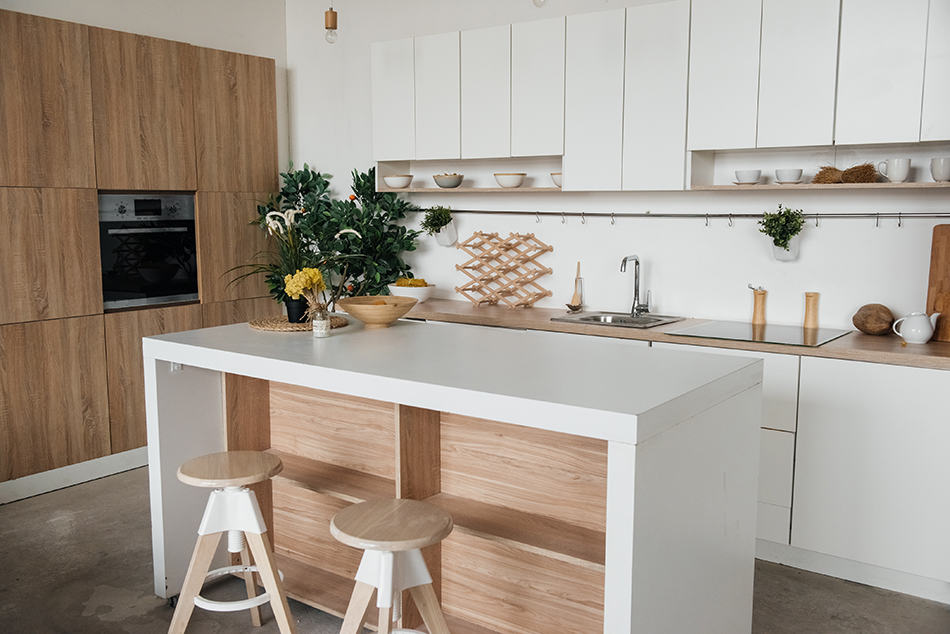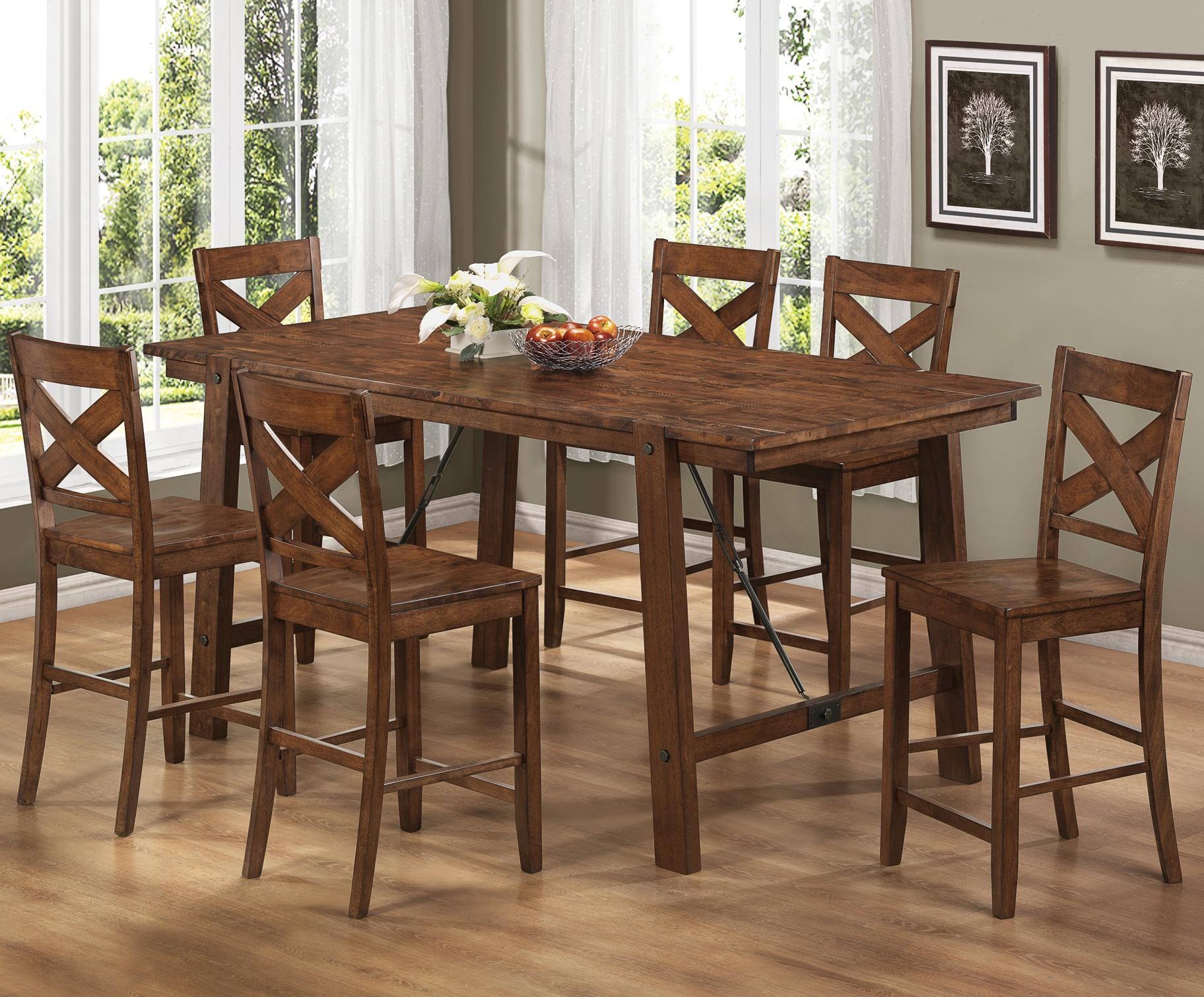English Tudor house designs emerged during the 16th century in the UK. They were often built from brick or stone, and the most characteristic features include steeply pitched roofs with multiple gables, decorative wooden beams, and tall chimneys. To replicate the medieval styling, leaded windows with wrought-iron fittings, as well as half-timbered walls, were popular in the Tudor look. The style was known for its eclectic mix of materials and textures, which gave off a warm and cozy vibe. Tudor houses are still sought after for their style and undeniable charm. Interior design elements of these English Tudor houses reflect the traditional air while incorporating modern accents. Features such as elaborately carved mantles, heavy wood furnishings, and ornate window treatments give off an elegant atmosphere.English Tudor House Designs
French cottage house designs are inspired by the country cottages that were built in France's rural and agricultural regions in the 19th century and earlier. The distinctive characteristic of this home style is that it's usually a single-story and combines modest construction with humble materials. Windows are often large with simple wooden frames and stone or brick walls contribute to the cottage charm. Typically, French cottage house designs are bright and cheerful, and feature small detailing such as gabled roofs, arched doors, and steeply pitched gables with multiple dormers. The interior reflect the same elegance and charm as the exterior, with wood flooring, exposed ceiling beams, and vintage furnishings. French cottage design also incorporates an open-floor plan where the dining area often flows seamlessly into the living area for a relaxed and cozy atmosphere.French Cottage House Designs
The Victorian era saw the emergence of Victorian house designs, which were characterized by intricate details, decorative woodwork, and complex shapes. Many of these houses were quite large, with multiple stories and gabled roofs. The Victorians often chose to paint their houses in two or three different colors or shades, inspired by the lush colors of nature. The interior design of Victorian houses tended to be quite dark, reflecting the values of the period. Victorian furniture is typically ornate and heavily carved with deep, rich colors, and the walls were often upholstered and few windows were present. Victorian designs also often featured steeply pitched roofs, rounded or pointed windows, and elaborate cornices and spindles on the exterior. Victorian House Designs
Gothic Revival houses evoke a romantic style, complete with all the pointed windows and steep gables from their medieval counterparts. Gothic Revival house designs first emerged in the 18th century in the UK, and it has gone on to influence the architecture of numerous countries. Gothic Revival houses usually emphasize features such as pointed arches, symmetrical façades, large windows, turrets and towers. Interior design details of Gothic Revival homes tend to be heavily ornamental with high ceilings and large windows that give off an airy, open feel. Furniture is usually dark and heavy, with intricate carvings and rich fabrics, while the walls are often painted in deep, earthy tones. Ornamental tracery adorning the windows and ceilings, and carved moldings all contribute to the traditional Gothic style. Gothic Revival House Designs
Storybook house designs are inspired by the whimsical fairytale cottages found in literature and folklore. These style of houses emerged in the early 20th century and feature asymmetrical shapes, crenelated rooflines, and a variety of shapes and materials. The exterior of storybook house follows a whimsical, fantasy-like design, with windows in odd shapes, stepped gables, and stone or stucco walls. Inside, storybook houses feature bright colors, built-in furnishings, and often feature striking staircase designs in curved and angled layouts. These homes are designed to capture the eye and offer a cozy, inviting feeling that reflect their fanciful designs. Storybook House Designs
French Chateau house designs are a hallmark of French architecture, with soaring turrets, opulent furnishings, and intricate detailing. These style of homes emerged in the late 16th century in France, and became increasingly popular in the 17th and 18th century. These luxurious homes feature steeply pitched roofs, symmetrical façades, and lavish interiors, all inspired by the sumptuous palaces of France's royal family. The exterior of these French chateau house designs feature exquisite details such as intricate wrought-iron balustrades, stone carvings, ornamental brickwork, and a variety of accents such as towers and gables. Interiors are often bright and luxurious, with large rooms, heavy furniture, and luxurious fabrics such as velvet and silk. Chandeliers and other ornamental fixtures are often used to add to the lavish ambiance of the house.French Chateau House Designs
Shingle house designs emerged in the 19th century in the United States along the east coast, and it has remained popular among coastal homes and cottages since then. These houses typically feature a steeply pitched roof with sloping sides and multiple gables. On the exterior, cedar shingles are used to cover the entirety of the house and often extend to cover the windows and doorways as well. Inside, interiors are cozy and light-filled with vaulted ceilings, natural wood beams, and whitewashed wooden walls. Flooring materials such as hardwood or distressed wood give off a rustic charm, while bright colored furnishings in the form of throw pillows and rugs add to the warm atmosphere. To replicate the coastal style, features such as driftwood accents, rattan furniture, and nautical-inspired art are often used to enhance the style.Shingle House Designs
The emergence of carriage house designs went hand-in-hand with the increased use of automobiles, and these designs began to appear in the 20th century. It's characterized by features such as a large, circular drive, a large, boxy structure with two stories or more, and often a garage. Interiors of carriage house designs are typically bright and airy, with open-plan layouts and large windows. These homes often utilize modern materials such as metal, concrete, and glass, combined with traditional details such as intricate woodwork and stonework. Features such as the large, open plan, natural wood flooring, and expansive windows bring a modern feel to these homes, while the traditional styling offers classic flair.Carriage House Designs
Since early medieval times, castle house designs have been used as a symbol of wealth and power. These designs emerged in Britain, Europe, and beyond, and feature turrets, crenelated walls, and large towers. Castle houses often feature stone or brick walls, with large arched windows, battlements, and steeply pitched roofs. The interior design of these homes usually reflects the castle theme, with large open rooms, intricate woodwork, and imposing fireplaces. Heavy furniture, tapestries, and luxurious upholstery fabrics add to the traditional atmosphere, while details such as vaulted ceilings, low arches, and timber beams are all hallmarks of the style. Castle House Designs
For a romantic, magical look, fairytale cottage house designs can't be beaten. These homes feature steeply pitched roofs with crenelated edges, and often feature a turret, tower, or conical roof. The walls typically are made of stone or brick, often with multiple colored brick or stone patterns. The interior of a fairytale cottage house follows a whimsical theme, often featuring carved wooden furniture, low beams, and curved doorways. Heavy tapestries, cobblestone fireplaces, and ornate lighting fixtures add to the cozy atmosphere, while walls are often decorated with paintings and murals depicting scenes from literature and mythology. Fairytale Cottage House Designs
Fairytale House Design to Transform Your Home
 The
fairytale house design
is the perfect way to give your home a makeover. The concept of the design is based on fantasy and fairy tales, providing an imaginative take on interior design. This style of house design not only looks unique, but also offers an escape from everyday life into an imaginary land. With its playful elements, the fairytale house design is sure to bring the magic of fairy tales into your home.
The
fairytale house design
is the perfect way to give your home a makeover. The concept of the design is based on fantasy and fairy tales, providing an imaginative take on interior design. This style of house design not only looks unique, but also offers an escape from everyday life into an imaginary land. With its playful elements, the fairytale house design is sure to bring the magic of fairy tales into your home.
Fairytale House Design as a Room Display
 The fairytale house design can be used as a room display that combines both modern and traditional styles. The design is centered around imaginative design elements that highlight fantasy. Most rooms feature furniture and decor that is inspired by fairytales such as Cinderella, Snow White, The Little Mermaid and more. The colors used in the design range from bright and cheerful pastels to darker and more muted tones. Bold colors such as red and blue are also popular choices for this design.
The fairytale house design can be used as a room display that combines both modern and traditional styles. The design is centered around imaginative design elements that highlight fantasy. Most rooms feature furniture and decor that is inspired by fairytales such as Cinderella, Snow White, The Little Mermaid and more. The colors used in the design range from bright and cheerful pastels to darker and more muted tones. Bold colors such as red and blue are also popular choices for this design.
A Focus on Imagination
 The main focus of this design is to create an atmosphere of imagination. The design uses furniture, decor, and other elements that allow for creative expression. Wall art and murals feature characters from popular fairytales as well as designs that bring to life scenes from Disney movies and nature scenes. The design also makes use of creative and fun touches such as 3-dimensional figures of characters, whimsical cushions, and adorable bookshelves. This design encourages people to think imagination and makes them feel like they are stepping into a magical world.
The main focus of this design is to create an atmosphere of imagination. The design uses furniture, decor, and other elements that allow for creative expression. Wall art and murals feature characters from popular fairytales as well as designs that bring to life scenes from Disney movies and nature scenes. The design also makes use of creative and fun touches such as 3-dimensional figures of characters, whimsical cushions, and adorable bookshelves. This design encourages people to think imagination and makes them feel like they are stepping into a magical world.
Reimagining Through Fairytale House Design
 The fairytale house design is an excellent way to give your home a modern twist. The combination of contemporary furniture pieces and traditional decor elements creates a unique look that will make guests of all ages fall in love with your home. Not only will it make your home look beautiful, but it will also help you create an environment of fantasy and playfulness. Get ready to transform your home into a magical kingdom of imagination and wonderful dreams.
The fairytale house design is an excellent way to give your home a modern twist. The combination of contemporary furniture pieces and traditional decor elements creates a unique look that will make guests of all ages fall in love with your home. Not only will it make your home look beautiful, but it will also help you create an environment of fantasy and playfulness. Get ready to transform your home into a magical kingdom of imagination and wonderful dreams.






















































































































